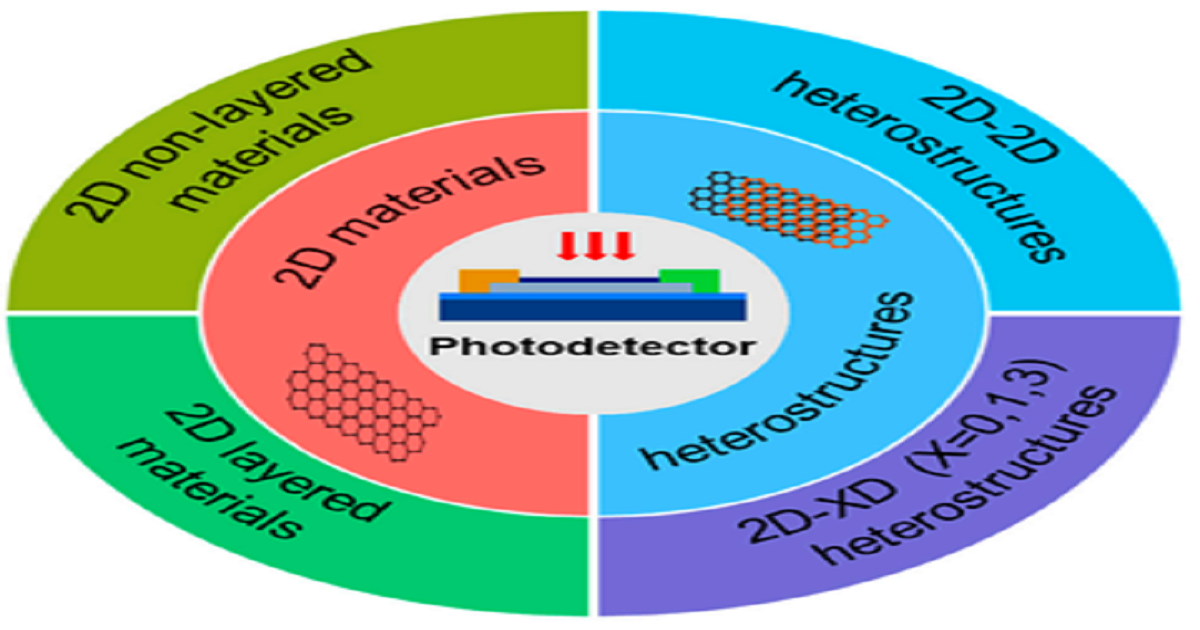Advanced 2D Materials and Heterostructures for Photodetector Devices with Multiple Applications
A special issue of Materials (ISSN 1996-1944). This special issue belongs to the section "Optical and Photonic Materials".
Deadline for manuscript submissions: closed (20 August 2025) | Viewed by 2127

Special Issue Editors
Interests: 2D materials; low-dimensional materials; photodetectors; field effect transistors; memory devices
Special Issue Information
Dear Colleagues,
This Special Issue invites contributions on the development and application of 2D materials and heterostructures in photodetectors, with emphasis on novel designs and material innovations. Recent advances in materials like graphene, transition metal dichalcogenides, and layered semiconductors have paved the way for highly sensitive and fast-response photodetectors across various spectral ranges. We seek research that explores synthesis, interface engineering, and device fabrication aimed at enhancing photodetector performance for applications in imaging, environmental monitoring, and polarization detection.
Topics of interest include the following:
- The synthesis and characterization of new 2D materials and heterostructures;
- Interface engineering to boost photodetector sensitivity and selectivity;
- Application-driven studies for high-resolution imaging and environmental sensing.
This Special Issue aims to showcase cutting-edge work that bridges material science and photodetector technology, offering insights into the potential of 2D materials to meet emerging technological demands.
Dr. Jamal Kazmi
Dr. Waqas Ahmad
Guest Editors
Manuscript Submission Information
Manuscripts should be submitted online at www.mdpi.com by registering and logging in to this website. Once you are registered, click here to go to the submission form. Manuscripts can be submitted until the deadline. All submissions that pass pre-check are peer-reviewed. Accepted papers will be published continuously in the journal (as soon as accepted) and will be listed together on the special issue website. Research articles, review articles as well as short communications are invited. For planned papers, a title and short abstract (about 250 words) can be sent to the Editorial Office for assessment.
Submitted manuscripts should not have been published previously, nor be under consideration for publication elsewhere (except conference proceedings papers). All manuscripts are thoroughly refereed through a single-blind peer-review process. A guide for authors and other relevant information for submission of manuscripts is available on the Instructions for Authors page. Materials is an international peer-reviewed open access semimonthly journal published by MDPI.
Please visit the Instructions for Authors page before submitting a manuscript. The Article Processing Charge (APC) for publication in this open access journal is 2600 CHF (Swiss Francs). Submitted papers should be well formatted and use good English. Authors may use MDPI's English editing service prior to publication or during author revisions.
Keywords
- two-dimensional materials
- photodetectors
- van der Waals heterostructures
- interface engineering
- transition metal dichalcogenides (TMDCs)
- polarization detection
- high-resolution imaging
- environmental sensing
- bandgap engineering
- optoelectronic applications
Benefits of Publishing in a Special Issue
- Ease of navigation: Grouping papers by topic helps scholars navigate broad scope journals more efficiently.
- Greater discoverability: Special Issues support the reach and impact of scientific research. Articles in Special Issues are more discoverable and cited more frequently.
- Expansion of research network: Special Issues facilitate connections among authors, fostering scientific collaborations.
- External promotion: Articles in Special Issues are often promoted through the journal's social media, increasing their visibility.
- Reprint: MDPI Books provides the opportunity to republish successful Special Issues in book format, both online and in print.
Further information on MDPI's Special Issue policies can be found here.







